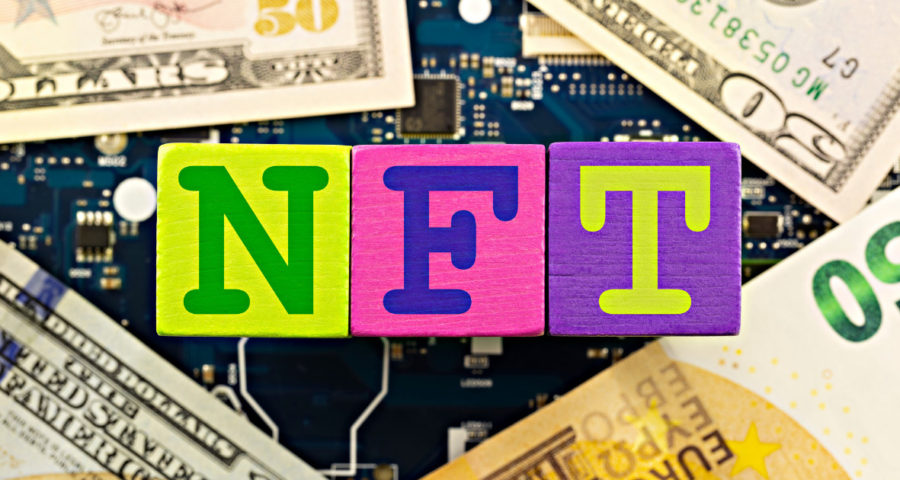NFTs are revolutionising the art world. They’re a way to get digital collectibles.
Everydays – The First 5000 days, an artwork by Beeple, an amalgamation of 5000 artworks created day after day by him, sold for $69 million.
The first tweet, by Jack Dorsey, “just setting up my twttr” went for $2.9 million.
“Essentially, NFTs create digital scarcity,” says Arry Yu, chair of the Washington Technology Industry Association Cascadia Blockchain Council and managing director of Yellow Umbrella Ventures.
In the first quarter of 2021, their sales crossed 2 billion.
This is the time when you likely first heard about them. And wondered what they are.
We just got around to understanding what a blockchain is. New technologies seem to be cropping up like mushrooms!
So, what are NFTs?
An NFT, or “Non-Fungible Token” is a way of acquiring ownership of a digital asset. It is effectively a unit of data stored on a blockchain (which, as you remember, is a digital ledger).
This certifies the uniqueness of the asset.
Here’s a quick lesson on what we mean here by “unique”:
This basically means that the asset is not interchangeable with anything else. So, it’s “Non-Fungible”
According to the Merriam-Webster:
“Fungible” is an adjective that means “being something (such as money or a commodity) of such a nature that one part or quantity may be replaced by another equal part or quantity in paying a debt or settling an account”
For example, a dollar can be divided into four quarters, and both a dollar and the four quarters would have the same value. Or, that one Bitcoin is equal to another single Bitcoin.
This is where the “Non-Fungible” part of “Non-Fungible Token” comes from!
Thus, these digital tokens are proof of ownership for assets, whether physical or virtual.
When were NFTs created?
The first NFT was realized on 3rd May, 2014, by Kevin McCoy and Anil Dash. It was made live in the Seven on Seven conference, New Museum, New York City.
This experiment marked the first time a Non-Fungible, tradable blockchain marker was linked to a unique artwork through on-chain metadata (via Namecoin).
This is in contrast to the “coloured coins” of other blockchain and Counterparty, that were multi-unit, fungible, and metadata-less.
The complete NFT Project was Etheria. It was launched and demonstrated live at DEVCON 1 in October, 2015, three months after the launch of Ethereum. (DEVCON 1 is Ethereum’s first developer conference.)
What NFTs can be used for:
NFTs can serve as representation for images, audio, videos, etc. Essentially, types of digital files.
However, it must be noted that access to copies of these artworks is not confined to the buyer.
Proof of ownership is different from copyright.
Why does proof of ownership not grant copyright?
According to legal scholar Rebecca Tushnet, “In one sense, the purchaser acquires whatever the art world thinks they have acquired. They definitely do not own the copyright to the underlying work unless it is explicitly transferred.”
The reason this exists is because when someone sells an NFT representing their work, they do not necessarily sell the copyright privileges along with it. So, the original owner is able to create more NFTs of the work.
Usually, NFT buyers don’t get copyright privileges when they buy an artwork. It can be considered something similar to an autographed print.
Criticisms of NFTs:
1. The possibility of plagiarism and fraud
Artists can have their work copied without permission and sold. For instance, the cases of Qing Han and Banksy.
“Sleepminting” may allow a fraudster to create an NFT in an artist’s wallet and transfer it to their own account with the artist unaware.
2. Off-chain storage and link rot
NFTs don’t usually store the file on the blockchain, due to the size of artworks. Instead, the token is a certificate of ownership, with a web address to the artwork. This means that the artwork may be subject to link rot.
3. Environmental concerns
This is related to the controversy about the high energy use associated with blockchain transactions. This leads to greater greenhouse gas emissions. Most of this is due to the proof of work protocols utilized to regulate and verify blockchain transactions, which eats up a large amount of electricity.
However, some more recent NFT technologies use different validation protocols. More importantly, mining as a whole has begun a shift towards a more eco-friendly approach.
Other ways that have been tried are the use of off-chain transactions as part of minting an NFT, using protocols with lower footprints. Also, the option of buying carbon offsets is also sometimes provided when buying NFTs.
NFT Marketplaces:
1. OpenSea.io
The world’s first and largest NFT marketplace.
2. Rarible
A democratic, open marketplace. RARI tokens issued on the platform allow users to decide features.
3. Foundation
Here, artists need upvotes or an invitation from other creators to post their art.
4. Binance NFT Marketplace
Has minimal fees for users and creators, with industry-best liquidity.
Conclusion:
If you want to invest in an NFT, research, make sure it’s an entirely personal decision, and that the piece you have chosen to invest in has meaning to you.


Leave a Reply